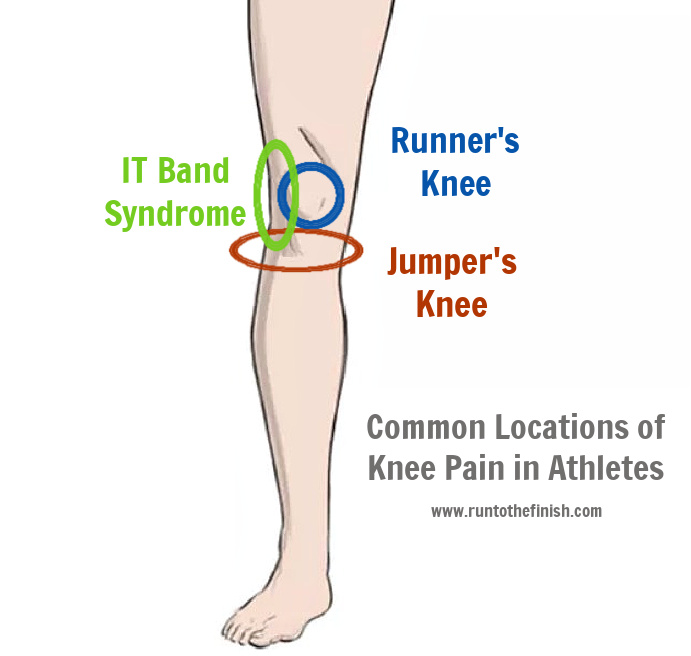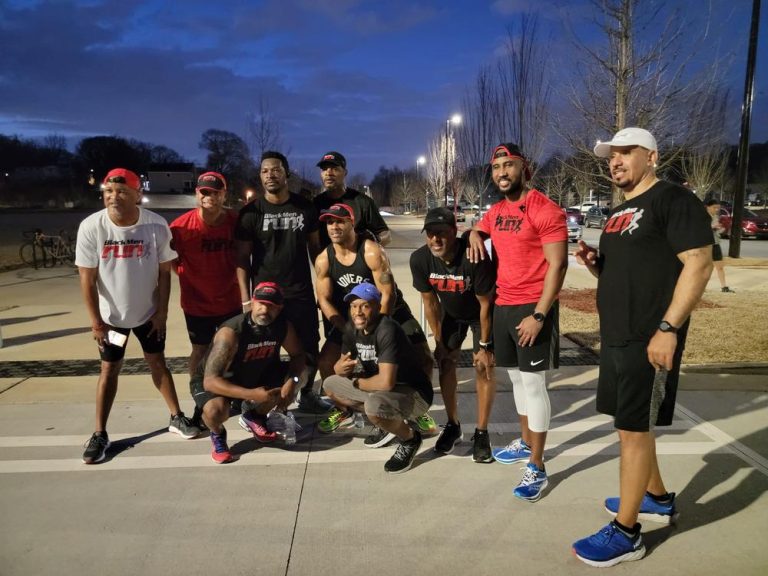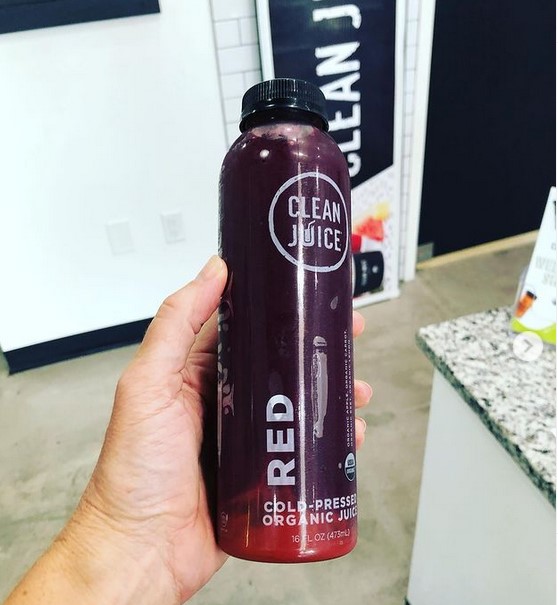Runners Knee Vs Jumpers Knee
Runners knee is pain from overuse while jumping knee is tendon inflammation. Both conditions affect the knee joint’s functionality.
Runners knee, also known as patellofemoral pain syndrome (PFPS), commonly affects runners and causes pain behind or around the patella. Jumpers knee, or patellar tendinitis, is characterized by pain at the front of the knee below the kneecap, typically affecting athletes who engage in activities like jumping or running.
Runners knee occurs due to repetitive stress on the knee joint, while jumpers knee involves inflammation of the patellar tendon. Understanding the differences between these conditions is crucial for proper diagnosis and treatment. We will explore the symptoms, causes, and treatment options for runners knee and jumpers knee to help individuals identify and manage these conditions effectively.
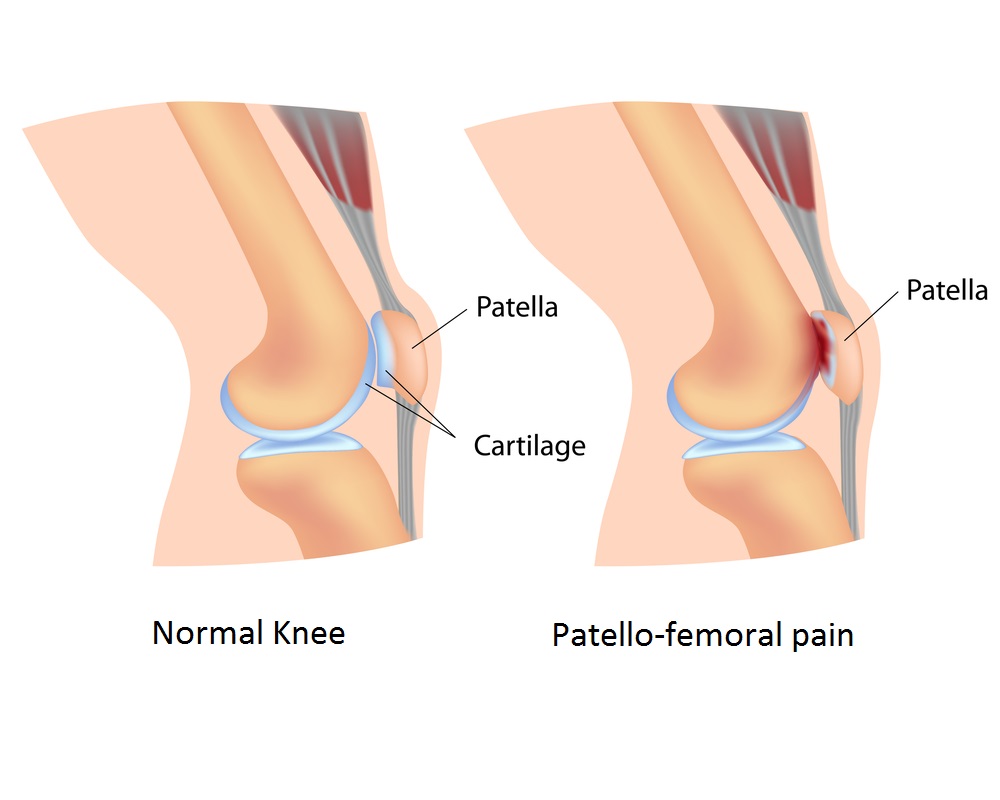
Credit: www.centralperformance.com.au
1. Causes Of Runner’s Knee
Runner’s knee, also known as patellofemoral pain syndrome, is a common overuse injury among runners. Several factors contribute to the development of this condition, including:
1.1 Overuse Or Repetitive Motions
The most prevailing cause of runner’s knee is overuse or repetitive motions. Running long distances or extending yourself too quickly without allowing sufficient time for recovery can strain the knee joint. The continuous stress on the knee can lead to irritation and pain.
1.2 Muscle Imbalances Or Weakness
Muscle imbalances or weakness in the quadriceps, hamstrings, or hip muscles can also contribute to runner’s knee. When certain muscles are disproportionately stronger or weaker, it can alter the mechanics of the knee joint, leading to uneven pressure and stress, and ultimately causing pain and discomfort.
1.3 Incorrect Footwear Or Running Technique
Wearing incorrect footwear or utilizing improper running techniques can exert unnecessary pressure on the knee joint. Shoes that lack proper support or cushioning can increase the impact on the knees, while poor running form can also exacerbate the issue. This may lead to biomechanical issues, misalignment, and ultimately, the development of runner’s knee.
2. Symptoms Of Runner’s Knee
2. Symptoms of Runner’s Knee
Knee Pain And Tenderness
Persistent pain and tenderness around the kneecap or behind it when walking or bending.
Swelling And Inflammation
Visible swelling around the knee joint accompanied by redness and warmth to the touch.
Pain Worsens During Activities
Pain increases while running, squatting, or climbing stairs due to stress on the knee joint.
3. Treatment For Runner’s Knee
- Rest the knee to allow it to heal properly.
- Apply ice to reduce swelling and pain.
- Compression bandages can provide support.
- Elevating the leg helps decrease inflammation.
- Strengthening exercises can help stabilize the knee.
- Stretching exercises improve flexibility.
- Balancing exercises enhance proprioception.
Using knee braces can provide additional stability and support during activities.
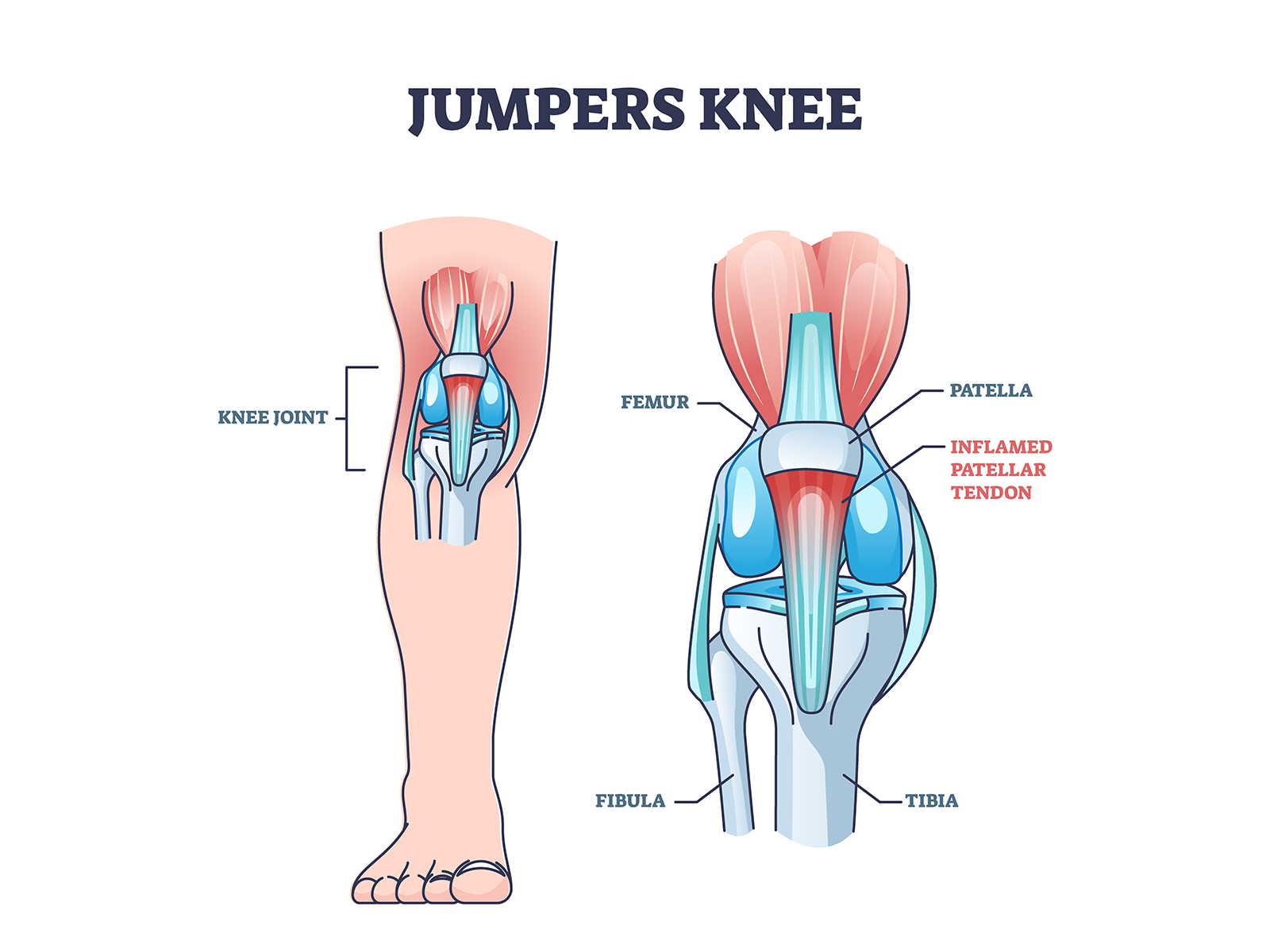
Credit: www.physique.co.uk
4. Causes Of Jumper’s Knee
Understanding the causes of jumper’s knee is vital for athletes and individuals engaging in activities that involve repetitive jumping and landing. Identifying the factors contributing to this condition can help in its prevention and effective management.
4.1 Repetitive Jumping Or Landing
Repetitive jumping or landing can place significant stress on the patellar tendon, leading to microscopic tears and inflammation. This frequent and intense impact can gradually contribute to the development of jumper’s knee, particularly in athletes who regularly participate in sports such as basketball and volleyball.
4.2 Sudden Increase In Training Intensity
A sudden increase in training intensity without adequate conditioning and strengthening of the quadriceps muscles can overload the patellar tendon, triggering the onset of jumper’s knee. This abrupt escalation in physical activity can strain the tendon, leading to pain and discomfort.
4.3 Weakness Or Imbalance In The Quadriceps Muscles
Weakness or imbalance in the quadriceps muscles can place excessive strain on the patellar tendon, increasing the risk of developing jumper’s knee. Inadequate strength and coordination in these muscles can disrupt the proper distribution of forces, leading to localized stress and potential injury.
5. Symptoms And Treatment Of Jumper’s Knee
Jumper’s knee, also known as patellar tendinitis, is a common injury among athletes, particularly basketball players and runners. Symptoms include pain and tenderness around the patellar tendon, along with difficulty in jumping or running. Treatment options for jumper’s knee include rest, physical therapy, and in severe cases, surgery.
When it comes to knee injuries, two common conditions that athletes and active individuals may encounter are Runner’s Knee and Jumper’s Knee. In this section, we will focus on the symptoms and treatment specifically related to Jumper’s Knee. Also known as patellar tendonitis, Jumper’s Knee is an overuse injury that affects the patellar tendon, which connects the kneecap (patella) to the shin bone (tibia). This condition often occurs in sports that involve repetitive jumping and landing movements, such as basketball, volleyball, and high jump. If you suspect you may have Jumper’s Knee, it is important to be aware of its symptoms and seek appropriate treatment.
5.1 Pain And Tenderness Below The Kneecap
One of the main symptoms of Jumper’s Knee is pain and tenderness below the kneecap. When you have Jumper’s Knee, you may feel a sharp, localized pain just below the patella, especially during activities that involve jumping or running. The pain may also be present when you touch the area below your kneecap or apply pressure to it. It is essential not to ignore this pain, as it may worsen over time and affect your performance.
5.2 Stiffness And Swelling
In addition to the pain and tenderness, Jumper’s Knee can also cause stiffness and swelling in the affected area. You may notice that your knee feels tight or difficult to move, particularly after physical activity. Swelling around the patellar tendon can also occur, making it visually noticeable or causing discomfort when you touch it. These symptoms can significantly impact your ability to participate in sports or engage in daily activities that require knee movement.
5.3 Rest, Physical Therapy, And Anti-inflammatory Medications
The treatment for Jumper’s Knee usually involves a combination of rest, physical therapy, and anti-inflammatory medications. The first step in the recovery process is to give your knee proper rest by avoiding activities that aggravate the pain. This includes reducing or modifying high-impact exercises and taking breaks from sports that involve repetitive jumping or running.
Physical therapy plays a crucial role in rehabilitating Jumper’s Knee. A physical therapist will guide you through specific exercises and stretching techniques to strengthen the muscles around your knee and alleviate stress on the patellar tendon. These exercises may include eccentric strengthening, quadriceps strengthening, and balance training.
In some cases, your doctor may recommend the use of anti-inflammatory medications, such as nonsteroidal anti-inflammatory drugs (NSAIDs), to help reduce pain and inflammation. However, it is important to consult with a healthcare professional before taking any medication.
In conclusion, recognizing the symptoms of Jumper’s Knee is essential for early intervention and optimal recovery. If you experience pain and tenderness below the kneecap, stiffness, or swelling, it may be time to consult with a medical professional. Through rest, physical therapy, and appropriate medications, you can effectively manage and treat Jumper’s Knee, allowing you to return to your favorite sports and activities with confidence.
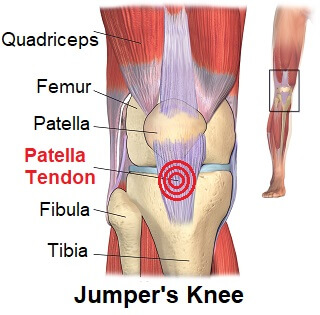
Credit: www.centralperformance.com.au
Frequently Asked Questions On Runners Knee Vs Jumpers Knee
What Causes Runner’s Knee?
Runner’s knee is caused by overuse or repetitive stress on the knee joint, leading to irritation and inflammation of the tissues.
How Is Jumper’s Knee Diagnosed?
Jumper’s knee is diagnosed through a physical examination, medical history evaluation, and imaging tests like an ultrasound or MRI.
What Are The Treatment Options For Knee Pain In Runners And Jumpers?
Treatment options for knee pain in runners and jumpers include rest, ice therapy, physical therapy, and in severe cases, surgery may be necessary.
Conclusion
Understanding the differences between runner’s knee and jumper’s knee is essential for athletes and individuals seeking solutions for their knee pain. By recognizing the distinct causes and symptoms, individuals can take the necessary steps to prevent and treat these common knee conditions effectively.
Proper diagnosis and targeted treatment plans will ensure a healthy and pain-free experience for avid runners and jumpers alike.

